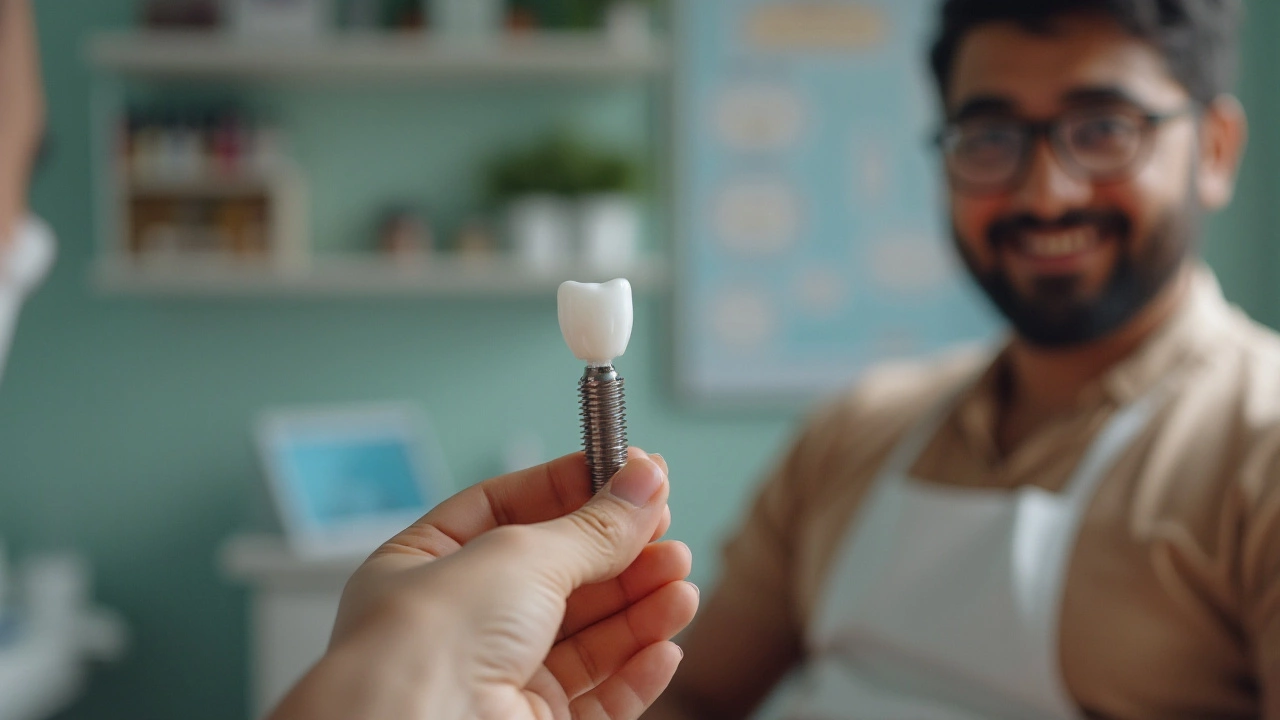Dental Implants – Your Quick Guide
Missing a front tooth or a back molar? You’re probably wondering if a dental implant can give you a natural‑looking, sturdy replacement. In plain terms, an implant is a tiny titanium post that fuses with your jawbone and holds a crown just like a real tooth. The whole process sounds high‑tech, but most patients go through three simple steps: implant placement, healing, and crown attachment.
First, the dentist drills a small hole in the gum and inserts the post. Then you wait for a few weeks to months while the bone grows around the post – a process called osseointegration. Once the post is firmly anchored, a custom crown is screwed or cemented on top. The result feels and works like a natural tooth, and it won’t slip when you chew.
How Dental Implants Work
Think of the implant as a replacement root. Because it’s made of biocompatible titanium, your body accepts it without a fight. The bone’s natural cells lock onto the metal, turning the post into a solid foundation. That’s why implants are stronger than bridges or dentures that rely on surrounding teeth for support.
During the healing phase, your dentist may give you a temporary crown so you can smile and eat soft foods. You’ll still need to keep the area clean – gentle brushing and rinsing with warm salt water helps avoid infection. Once the post is fully integrated, the permanent crown is crafted to match the color and shape of your neighboring teeth.
Choosing the Right Implant Provider
Not all clinics are created equal. Look for a dentist who specializes in implantology and has a portfolio of real cases. Ask about their success rate and whether they use 3‑D imaging to plan the surgery. A good provider will explain the whole timeline, cost breakdown, and potential risks.
Speaking of cost, implants in India typically range from ₹25,000 to ₹60,000 per tooth, depending on the brand, location, and any additional procedures like bone grafts. Many clinics offer payment plans, so check if financing fits your budget. Remember, the cheapest option may cut corners on materials or follow‑up care, which could bite you later.
After the crown is placed, treat the implant like any other tooth – brush twice a day, floss, and visit your dentist for regular check‑ups. If you notice swelling, persistent pain, or a loose crown, call your dentist right away. Most problems are caught early and fixed without losing the implant.
In short, dental implants give you a permanent, natural‑looking solution for missing teeth. They’re strong, don’t affect adjacent teeth, and look just like the real thing. By choosing a qualified provider, understanding the cost, and committing to proper after‑care, you can enjoy a confident smile for years to come.



